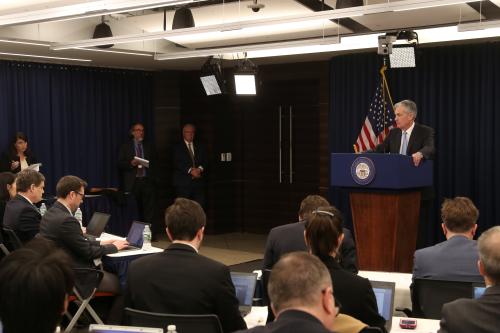The investment-grade corporate bond market, which functioned well in the global financial crisis, did not in the COVID-19 crisis, and required aggressive emergency intervention by the Federal Reserve. The corporate bond market is an important source of financing for businesses. Nonfinancial corporate businesses borrow more in the corporate bond market ($6.5 billion) than they borrow directly from banks ($1.4 billion). Significant disruptions in the corporate bond markets that shut down new bond issues could lead firms to cut employment and investment.
The COVID-19 crisis triggered sharp falls in the prices of investment-grade corporate bonds, proportionately more than for high-yield bonds, which was surprising as high-yield bonds are riskier, less liquid, and more sensitive to a deterioration in the economic outlook. Measures of market liquidity, such as bid-ask spreads and price impact, deteriorated to such an extent that it was as or more costly to trade an investment-grade bond as a high-yield bond.
The rise and fall of spreads on investment-grade and high-yield corporate bonds during the pandemic

This paper presents evidence that significant structural changes in the financial sector since the global financial crisis have increased dramatically the demand for liquidity by corporate bond investors beyond the ability of the markets to provide it in stress events. It draws on a rich set of papers to document the turmoil and the market’s response to the Fed’s actions. It documents the acceleration of large redemptions from investment-grade corporate bond mutual funds, which put downward pressure on the prices of investment-grade corporate bonds. The use of Treasury securities by these funds for liquidity risk management also contributed significantly to the “dash for cash” by investors in those volatile weeks, when investors also were worried about the ability of markets to function when traders began to work at home.
The paper suggests areas for further study to increase the resilience of corporate bond markets to future shocks, by reducing the systemic consequences of liquidity mismatch of corporate bond mutual fund and improving dealers’ market-making capacity. Regulators for some time have worried about the “phantom” liquidity offered by bond mutual funds that offer daily liquidity when the underlying assets are less liquid, but they have focused mainly on this liquidity mismatch in high-yield bond or bank loan funds. But a lesson from March suggests that investment-grade bond mutual funds warrant attention, given the surprisingly large redemptions and whether they are viewed as “near-cash products,” as they collectively have become sizable and their behavior is highly correlated.
Another lesson from March is that the success to date of the Fed’s corporate bond program to calm the markets does not suggest that reforms are not needed. Instead, the reforms are even more critical, since the Fed’s actions likely raised expectations of such interventions in the future. It is important that the Fed, through financial reforms or clarifying its own intent for future emergency actions, reduce any perception by private entities that they would not have to bear the costs of their own risk-taking.
The Brookings Institution is committed to quality, independence, and impact.
We are supported by a diverse array of funders. In line with our values and policies, each Brookings publication represents the sole views of its author(s).





